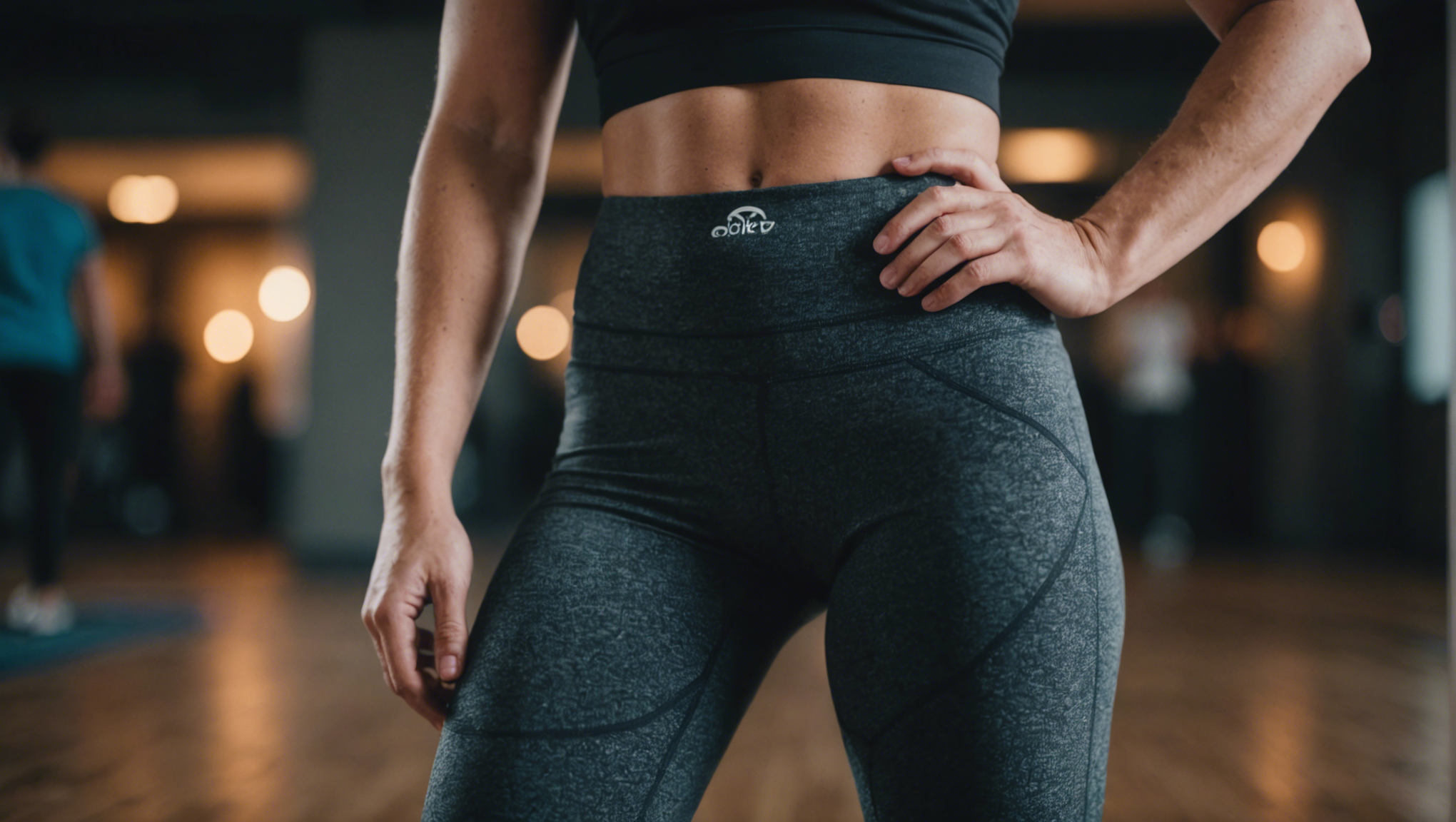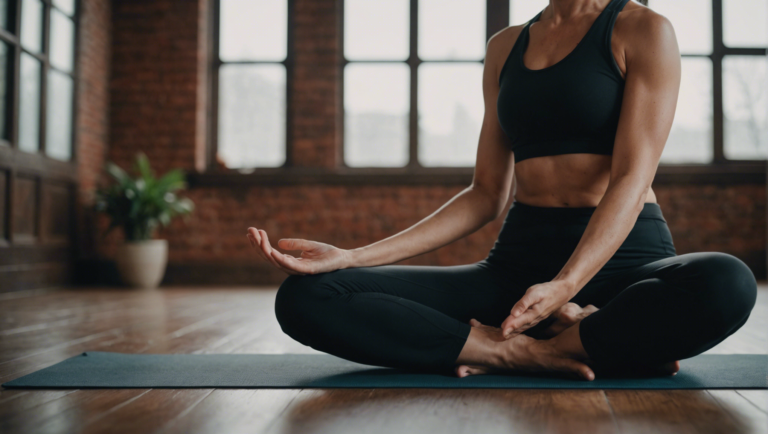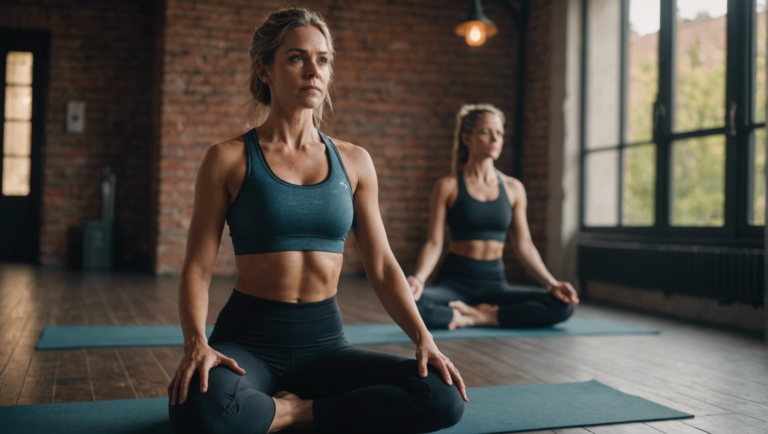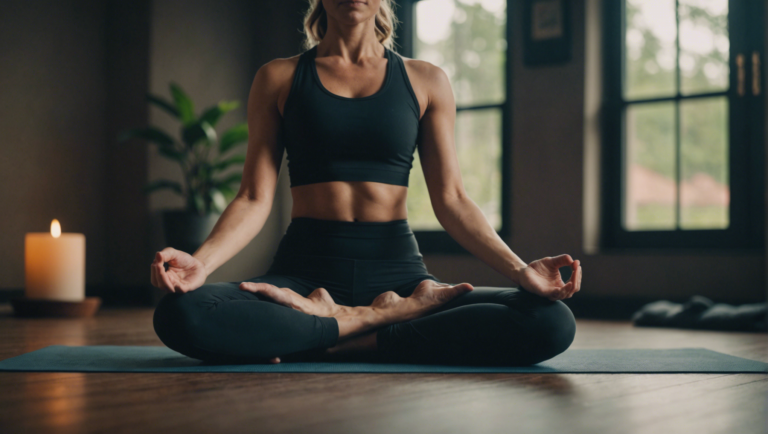Are Yoga Pants And Leggings The Same? A Comprehensive Comparison
Unraveling the Mystery: Are Yoga Pants and Leggings the Same?
Unraveling the mysteries of everyday wear, especially when it comes to the nuances between yoga pants and leggings, has become a subject of significant discussion among fitness enthusiasts, fashion aficionados, and the average consumer alike. At the heart of this discourse lies the quest to understand the fundamental differences and applications of these two popular types of attire. This comprehensive comparison aims not only to delineate these differences but also to provide insights that transcend the obvious, thereby empowering readers with the knowledge to make informed decisions tailored to their lifestyle and needs.
The Fabric of Choice
Yoga pants and leggings may seem interchangeable to the untrained eye, yet a deeper investigation reveals contrasts rooted in their material makeup. Traditionally, yoga pants are crafted from thicker, more durable materials such as nylon, polyester, or a blend incorporating spandex. This composition offers a balance of flexibility, breathability, and support, catering to the physical demands of yoga and other forms of exercise.
Leggings, on the other hand, are typically made from a blend of materials that prioritize comfort and flexibility over support. The common incorporation of cotton, along with elastane or spandex, results in a softer fabric that conforms closely to the body’s shape. While this makes leggings ideal for casual wear, lounging, or layering, it does not always provide the structural support needed for physical activities.
Designed for Movement
Beyond the fabric, the design elements of yoga pants and leggings serve as another distinguishing factor. Yoga pants often feature a higher waistband, engineered to stay in place during various yoga poses and to offer abdominal support. Additional design features, such as moisture-wicking properties and compression zones, cater specifically to the needs of those engaging in physical activities.
In contrast, leggings tend to have a simpler design, with a focus on versatility and aesthetic appeal. The waistband on leggings may sit lower, and in terms of functionality, they are less likely to include features such as pockets or compression zones, which are more common in athletic wear.
Versatility and Style
When considering the context of wear, yoga pants have extended their utility beyond the yoga studio, becoming a staple in gym settings, casual outings, and even the workplace, thanks to advances in design and the blurring lines between sportswear and casual attire. Their robust material and supportive design make them a versatile choice capable of transitioning through various facets of an active lifestyle.
Leggings, celebrated for their unparalleled comfort and adaptability, seamlessly integrate into a multitude of settings, from the comfort of home to social gatherings, and when appropriately styled, even into more formal environments. The vast array of patterns, colors, and textures available in leggings allows for greater personal expression and fashion flexibility compared to the generally more muted and functional appearance of yoga pants.
Navigating the Differences
Understanding these distinctions is paramount in making an informed choice that aligns with one’s personal needs, preferences, and lifestyle. For individuals seeking attire for active pursuits, yoga pants offer the required support, durability, and specific design features conducive to physical activity. Conversely, for those prioritizing comfort and fashion versatility, leggings emerge as the preferred option, offering a balance of coziness, style, and the freedom to personalize one’s look.
This comparison shines a light on the unique characteristics and intended applications of yoga pants and leggings, challenging the notion that they are merely two expressions of the same garment. By recognizing these distinctions, consumers are better equipped to select the option that best suits their activities and aesthetic preferences, ensuring comfort, functionality, and style resonate in harmony with their daily lives. Engaging with this knowledge not only enhances one’s wardrobe choices but also encourages a broader appreciation for the intentional design and versatility embedded in our everyday attire.
The Evolution of Comfort Wear: From Yoga Mats to Street Fashion
Material Matters: Understanding the Fabric Behind the Fit
In the quest for the perfect fit and utmost comfort during various activities, one often overlooks the crucial role of materials used in crafting athletic and leisure wear. Specifically, when it comes to yoga pants and leggings, the distinction in fabric composition not only delineates their use but also significantly impacts performance, comfort, and durability. Delving deeper into the fabric behind the fit provides insightful revelations about why certain materials are preferred for specific garments and activities.
Exploring the Spectrum of Fabrics
The choice of fabric in yoga pants and leggings is pivotal to their functionality. Typically, yoga pants feature a blend of materials that offer both stretch and support, crucial for a wide range of motion during yoga or other fitness activities. Commonly, manufacturers use a combination of polyester, spandex, and sometimes cotton to achieve this balance. The polyester provides durability and moisture-wicking properties, essential for keeping the wearer dry during intense sessions. Spandex, on the other hand, contributes to the stretchability, ensuring the pants move with the body without losing shape. Meanwhile, the inclusion of cotton offers breathability and softness, enhancing the overall comfort of the garment.
Leggings, while similar in appearance to yoga pants, often have a varied fabric composition. Aimed more at comfort and versatility, leggings can be made from a broader spectrum of materials, including heavier cotton blends, lycra, and even more luxurious fabrics like leather or suede for fashion purposes. The key difference here lies in the functionality; leggings designed primarily for fashion or casual wear might not possess the moisture-wicking or stretch capabilities of those intended for athletic use.
Performance-Driven Materials
When the focus shifts to performance, the fabric’s technological advancements come into play. High-performance yoga pants are often made with proprietary fabrics that offer compression, enhanced moisture-wicking, and even antimicrobial properties. These materials are engineered to increase blood circulation, support muscles during physical activity, and prevent the growth of bacteria, thereby reducing odor. Compression fabrics, for example, are tightly woven with elastic fibers to offer a snug fit that supports muscle recovery and reduces fatigue.
The Role of Sustainability in Fabric Choices
An increasing awareness around sustainability has also influenced the materials used in yoga pants and leggings. Eco-friendly options such as recycled polyester and organic cotton are becoming more common. These materials not only reduce the environmental footprint of production but also provide benefits in terms of comfort and durability. Recycled polyester, made from post-consumer plastic bottles, offers the same performance benefits as virgin polyester with a significantly lower environmental impact. Organic cotton, devoid of pesticides and fertilizers used in conventional cotton farming, is softer and often hypoallergenic, making it suitable for sensitive skin.
Comfort vs. Compression: A Balancing Act
The ultimate choice between yoga pants and leggings often boils down to the wearer’s preference for comfort against the need for compression. For activities requiring a high degree of movement and support, such as yoga or running, yoga pants with high-performance fabrics offer the necessary functionality. On the other hand, for casual wear or less intense exercise routines, leggings provide ample comfort and flexibility with a more extensive range of fabric choices.
The Fabric Behind the Fit: A Deciding Factor
Understanding the differences in fabric composition between yoga pants and leggings assists consumers in making informed choices based on their specific needs and activities. Whether prioritizing performance, comfort, or sustainability, the fabric behind the fit plays a decisive role in the effectiveness and satisfaction derived from these garments. As the industry continues to evolve, the innovation in materials and their applications promises to enhance the functionality and appeal of yoga pants and leggings alike, ensuring they remain staples in wardrobes for years to come.
Design and Functionality: A Closer Look at Yoga Pants and Leggings
In the realm of activewear and casual fashion, two garments have risen to prominence for their comfort, versatility, and style: yoga pants and leggings. While often used interchangeably in conversation, these two items possess distinct characteristics that cater to different needs and preferences. Delving into the design and functionality of yoga pants and leggings reveals the nuances that not only differentiate them but also highlight their unique strengths.
The Distinctive Design Elements
When evaluating the physical design of yoga pants and leggings, several aspects stand out. Yoga pants are traditionally made with a blend of materials that offer breathability, stretch, and moisture-wicking properties essential for a rigorous yoga session or workout. They typically feature a thicker waistband for support and may come in various styles including flare, bootcut, and fitted designs.
On the other hand, leggings are designed for a snug fit, hugging the body from the waist down to the ankles or mid-calf. They are crafted from a combination of fabrics such as cotton, polyester, and elastane, which provide flexibility and comfort. While originally intended for layering under other clothing items, leggings have evolved into stand-alone pieces worn for both fitness and fashion purposes.
Functionality and Performance
The functionality of these garments further delineates their intended use. Yoga pants, with their durable fabric and stretchability, are engineered to withstand the physical demands of yoga poses and other forms of exercise. The thicker material and often wider waistbands offer support and coverage, making them suitable for high-impact activities.
Leggings, due to their lightweight and comfortable fit, serve a dual purpose. While many opt to wear them during light workouts, pilates, or lounge activities due to their comfort level, leggings have also become a staple in everyday attire. Their form-fitting silhouette makes them a versatile piece that can be styled in numerous ways, transcending the boundaries of the gym to streetwear.
Style and Versatility
The style quotient of both yoga pants and leggings is undeniably high, but their versatility in fashion speaks volumes about their separate identities. Yoga pants, particularly those with a flared or bootcut leg, impart a more relaxed vibe suitable for gym wear or casual outings. Their structured fit lends itself well to activewear tops and sneakers, embodying a sporty aesthetic.
Conversely, leggings offer an immense range of styling possibilities. From pairing with oversized sweaters and boots for a chic, autumnal look to coupling with tunics and sandals during warmer months, leggings adapt seamlessly to various fashion trends and seasons. Their tight fit accentuates the form, allowing for layered looks or as a sleek counterpart to more voluminous tops.
Considerations for Purchase
When deciding between yoga pants and leggings, it’s important to consider the primary use, desired comfort level, and style preferences. For those engaged in regular physical activity or seeking garments with a bit more structure and support, yoga pants may be the ideal choice. However, for individuals looking for a multi-functional piece that can transition from home, to the gym, to casual outings, leggings might be the more suitable option.
Final Thoughts on Design and Functionality
Understanding the differences in design and functionality between yoga pants and leggings empowers individuals to make informed choices based on their lifestyle, activities, and fashion sensibilities. Whether it’s the high-performance characteristics of yoga pants that appeal or the versatile allure of leggings, both garments offer unique benefits that cater to a wide array of preferences and needs. As activewear continues to evolve, the distinction between yoga pants and leggings remains a testament to their tailored approaches to combining comfort, style, and utility in everyday wear.
Making the Right Choice: When to Wear Yoga Pants versus Leggings
Navigating the fine line between yoga pants and leggings can sometimes feel like deciphering a fashion conundrum. Both have seamlessly integrated themselves into not only the athleisure sphere but also daily wear, creating a versatile foundation for numerous outfits. However, selecting which to wear – and when – depends on understanding their distinct characteristics, functionality, and the context in which they are most appropriately worn.
Distinguishing Features Between Yoga Pants and Leggings
At first glance, yoga pants and leggings might appear indistinguishable, but a closer look reveals distinct differences that influence when and how each should be worn. Yoga pants, designed with the flexibility of yoga and other high-intensity workouts in mind, are typically crafted from thicker fabrics and possess a higher waistband for enhanced support and coverage. They often feature a flared or bootcut leg as opposed to leggings, which are generally skin-tight from the waist down to the ankles.
Leggings, on the other hand, while also designed for comfort and freedom of movement, are made from a variety of materials ranging from cotton blends to synthetic moisture-wicking fabrics. Their lightweight nature and form-fitting silhouette render them a favored choice for layering under long tops, dresses, and skirts. Unlike yoga pants, leggings often serve a dual purpose – functional athletic wear and fashionable garment for casual or dressy occasions.
When to Opt for Yoga Pants
Understanding the optimal situations to wear yoga pants hinges on their design intent – support and performance during physical activities. The sturdy fabric and snug waistband provide the necessary support for yoga poses, stretches, and other forms of exercise, making them an ideal choice for gym sessions, jogging, and, naturally, yoga classes. Besides their fitness-oriented design, yoga pants have evolved to include styles that are not only practical but stylish enough for running errands or casual outings, where comfort and a bit of flair are desired.
Leggings: An All-around Versatile Choice
Leggings’ versatility makes them a staple in wardrobes across the globe. For athletic pursuits, choose high-performance leggings with sweat-wicking properties. But beyond the gym, leggings shine as a fashion-forward option. Pair them with tunics, oversized sweaters, or even blazers for an ensemble that transitions effortlessly from day to night. While ideal for casual wear, certain leggings can be dressed up for more formal occasions, depending on the fabric and overall outfit composition.
Selecting According to Fabric and Fit
One crucial consideration in choosing between yoga pants and leggings is the fabric’s quality and the garment’s fit. Look for materials that offer stretch yet retain their shape to avoid sagging or becoming translucent when bending or stretching. A well-fitting piece should comfortably hug the body without constricting movement, particularly important for yoga pants meant for exercise.
The Balancing Act of Style and Functionality
Ultimately, the decision between wearing yoga pants or leggings boils down to balancing style with functionality. Assess the day’s activities, the required comfort level, and the desired look before choosing. For workout and active day schedules, lean towards yoga pants for their support and durability. On days where fashion flexibility and comfort are paramount, leggings offer endless styling possibilities.
Embracing Personal Preference and Comfort
While guidelines can help navigate when to wear yoga pants versus leggings, personal preference and comfort should always be the deciding factors. Both garments provide a blend of style, comfort, and functionality, making them indispensable in modern attire. Experimenting with different styles and fits will help identify what works best for individual lifestyles and body types, ultimately creating a tailored approach to integrating these versatile pieces into a cohesive wardrobe.
The dynamic between yoga pants and leggings showcases the evolving landscape of fashion, where functionality meets style. By understanding their unique characteristics and ideal scenarios for wear, it becomes easier to make informed choices that align with personal style, comfort, and the demands of daily life.
Conclusion
Navigating the world of athleisure wear often presents consumers with a plethora of choices, each with its unique appeal and functionality. The journey through understanding the similarities and differences between yoga pants and leggings takes us from their conceptualization and design all the way to their practical applications in our daily lives. This comprehensive exploration not only demystifies the common confusion surrounding these two staples of comfort wear but also enriches our wardrobe decisions with informed insights.
The evolution of both yoga pants and leggings from specialized athletic gear to ubiquitous fashion staples underscored a significant cultural shift towards prioritizing comfort without compromising style. This transition did not happen overnight but is the result of years of innovation in textile technology and changing fashion sensibilities. As we’ve seen, both garments initially served specific purposes—yoga pants finding their roots in the world of fitness and meditation, and leggings evolving from a layering garment into a standalone piece of casual and even professional attire. The journey from the yoga mat to the runway, and eventually to the streets, highlights the versatile nature of these garments, adapting and morphing to meet the ever-changing demands of fashion and functionality.
The exploration of the materials used in the crafting of yoga pants and leggings reveals much about their intended purpose and suitability for various activities. While both may share a superficial resemblance, the choice of fabric often dictates where, when, and how these garments should be worn. Yoga pants, typically fabricated from thicker materials with moisture-wicking properties, cater to the demands of physical activities that require flexibility and breathability. Leggings, on the other hand, come in a broader range of materials, from the warmth-providing thick cotton to the sleek, fashion-forward synthetic blends. This intrinsic difference in material choice not only affects the wearer’s comfort but also the garment’s durability and functionality in different settings.
Further dissecting these two categories, the design and functionality segment sheds light on the thoughtful engineering behind each. Yoga pants often feature a higher waistband for better support and coverage, making them well-suited for the dynamic movements involved in yoga and other fitness activities. They might also include functional details such as pockets, reflecting a design that melds utility with comfort. Leggings, with their sleeker silhouette, prioritize ease of movement and versatile style, seamlessly transitioning from a workout session to a day out with friends.
Armed with this nuanced understanding of yoga pants and leggings, consumers can make more informed choices aligned with their lifestyle and fashion preferences. The decision between wearing yoga pants or leggings hinges not just on the activity at hand but also on personal comfort, the required level of support, and the desired aesthetic effect. Whether opting for the snug, figure-highlighting comfort of leggings for a casual day out or the structured support of yoga pants for a workout, recognizing the distinct characteristics of each can significantly enhance one’s clothing choices.
As we weave through the intricate details of these popular athleisure wear items, the distinction between yoga pants and leggings becomes clearer, empowering us to make choices that best suit our personal needs and preferences. This understanding transcends the superficial to touch upon the broader implications of our fashion choices on comfort, functionality, and style. By appreciating the subtle differences and embracing the unique benefits of each, we not only enrich our wardrobes but also elevate our everyday experience, blending fashion effortlessly with our active lifestyles.



